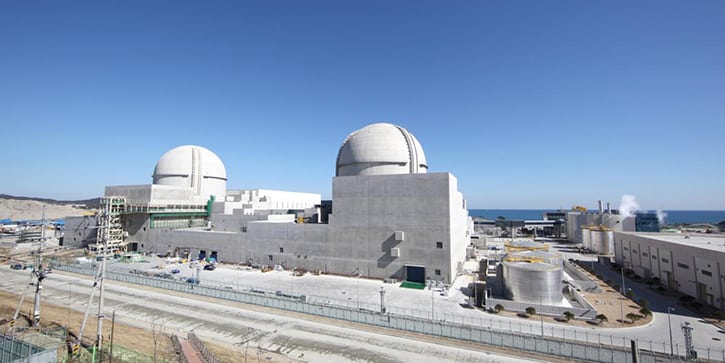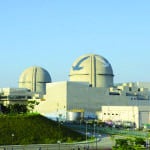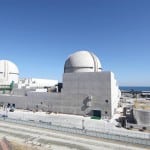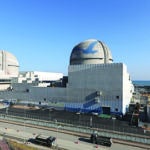The Nuclear Regulatory Commission (NRC) announced on Mar. 4 that, after completing an acceptance check, it has concluded that an application to certify the Advanced Power Reactor 1400 (APR1400) reactor design for use in the U.S. is complete enough to begin a full design certification review.
The application—submitted collaboratively by Korea Hydro and Nuclear Power Co. (KHNP) and Korea Electric Power Corp.—was received on Dec. 23, 2014. NRC staff did not provide a review schedule, but according to a KHNP press release, Glenn Tracy, director for the NRC’s Office of New Reactors, said that he hopes to make it a best practice to complete reviews within 42 months.
The NRC’s certification process determines whether a reactor design meets the basic U.S. safety requirements. Companies can then reference a certified design when applying for a combined license to build and operate a reactor.
The APR1400 is a pressurized-water reactor based on the Korean Optimized Power Reactor 1000 (OPR1000) design. The APR1400 is capable of supplying about 1,400 MW of net electrical output. Design development began in 1992 with the standard design completed in 2002.
The APR1400 has two primary coolant loops, each with one steam generator and two reactor coolant pumps. The arrangement has two cold legs and one hot leg per steam generator. The two-loop/four-pump configuration has proven reliable through years of operation in OPR1000 plants.
Currently, there are four APR1400 units under construction in Korea—Shin-Kori Units 3 and 4, and Shin-Hanul Units 1 and 2—and three more under construction in the United Arab Emirates—Barakah Units 1, 2, and 3—with a fourth planned at the site. The Shin-Kori units (Figure 1) were originally scheduled to be in commercial operation by now, but control cabling failed testing, which resulted in delays as it was being replaced. KHNP estimated that the units were 98.22% complete, as of the end of January, and expectations are that the plant will commence operation this spring.
 |
| 1. Shin-Kori Units 3 and 4. Courtesy: Korea Hydro & Nuclear Power Co. |
Meanwhile, AREVA Inc. submitted a request to the NRC to suspend the safety review of its U.S. Evolutionary Power Reactor (EPR) design certification application until further notice.
AREVA reported a loss of €4.9 billion ($5.6 billion) for 2014, which followed a loss of €500 million suffered in 2013. The company said the loss is attributable in part to delays and cost overruns at the Olkiluoto 3 EPR project in Finland and a research reactor construction project, as well as to renewable energy contracts.
The NRC reports that there are two combined license applications currently being reviewed that propose using the EPR design. The Calvert Cliffs Unit 3 application was submitted in July 2007 and the Bell Bend Unit 1 application—a new facility planned for a site adjacent to PPL’s Susquehanna plant in Luzerne County, Pennsylvania—submitted in October 2008. The projects have both been delayed not only due to AREVA’s inability to obtain NRC approval for the EPR design, but also because of construction cost and power market uncertainties.
—Aaron Larson, associate editor (@AaronL_Power, @POWERmagazine)









